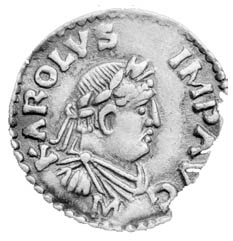Roman French Masonry
Freemasonry in the West is of french origin, but it came from the East. The word francmason for freemason gives the tale away. Franc of course meaning free. This angle is rarely underlined in masonic literature. Either the literature will say that it originated with England in the 18th century from stone mason guilds - explaining that the word free meant, free from actual physical work on masonry to speculate on spiritual things building a spiritual temple of people - or that it is very ancient in nature.
Is there any information available, which would support this idea? And if positive are there further arguments to underpin this idea?
"As is well known to students of Masonic history, (though not to all Masons by any means), there is in existence a class of MSS. known as the "Old Charges" of Freemasons, but which would more appropriately be termed "Legendary Histories of the Craft of Masonry." The known copies of these number about eighty and are to be found in the possession of Lodges, individuals, libraries and museums. Until a comparatively recent date they were unpublished, but now nearly all are obtainable in printed form. The earliest of them, the "Halliwell" or "Regius" MS., dates from about 1390 A.D.; the next oldest, the "Cooke," from about 1450 A.D.; while the others originated at irregular intervals extending down well into the last century. The extreme value of these documents in relation to the Craft is universally recognized."
One of the oldest traditions of Freemasonry recorded in these MSS. histories, is that which connects with the fraternity Charles Martel, who, at the battle of Tours, in A. D. 732, turned back the tide of Saracenic invasion of Europe. In its earliest form it read thus:--
"And thus was that woorthy Crafte of Massonrey Confirmed in the Countrey of Jerusalem And in many other Kyngdomes. "Curious Craftes men walked aboute full wyde in Dyu's Countries soome to Learne more Crafte and conning and some to teache them that had but litle conning and so yt befell that their was on' Curious Masson that height Naymus grecus that had byn at the making of Sollomon's Temple and he came into ffrance and there he taught the Science of Massonrey to men of ffraunce And there was one of the Regall lyne of ffraunce that height Charles Martell And he was A man that Loved well suche A Crafte and Drewe to this Naymus grecus and Learned of him the Crafte And to vppon him the Chardges and ye mann's. And afterward by the grace of god he was elect to be Kyng of ffraunce. And when he was in his Estate he tooke Massons and did help to make men Massons yt weare none and sett them A woorke and gave them bothe the Chargs and mann's and good paye that he had learned of other Massons And confirmed them A Charter from yere to yeare to holde their assembly wheare they woulde, And churrishe them right much And thus came the Crafte into ffraunce." (1)
More than seventy later versions of the "Old Charges" repeat the story in much the same language. Three, the Cooke, the William Watson, and the Henery Heade MSS., (one older and two later than the Grand Lodge No. 1), denominate this legendary patron of the Craft "Carolus Secundus." Not one mentions Charlemagne and yet in recent years the attempt has been made, with some success, to substitute Charlemagne for both Charles Martel and "Carolus Secundus" in this legend. (2)
- 1 - Quoted from the Grand Lodge MS. No. 1 of the "old charges." This MS. bears date A.D. 1583 and is printed in Hughan's "Old Charges" (1872), p. 41, Sadler's "Masonic Facts and Fictions" (1887), p. 199; Quatuor Coronati Antigrapha, Vol.
- 2- A.Q.C. vol. XVIII, p. 179; Ib. vol. XIX, p. 45.
The son of the widow - an important figure in Masonic ritual lore - then is no other than Charles Martel, or Charles the Hammer. It is well known that the Russian Communism was largely dominated by the French Grand Orient Lodge. The communist hammer and sickle symbol then is a slight reminder of Charles the Hammer, Charles Martel that is.
But of course there should be much more to arrive at such a conclusion. The most important feature of Western Masonic symbolism is that of two pillars. The two pillars of divide between Church and State, between spiritual and political power. And here we have as matter of fact one of the most important give-aways.
Any Roman Catholic historian and theologian will underline that it was the Roman Catholic Church, which gave the West the idea of a divide between Church and State. It was not known as such as a principle in the Byzantine view of the political, since as was the case in the Anglican world later, the Emperor was the head of both powers.
The Pepins as creators of the vision of Charles Martel were the first to introduce spiritual realm for the Roman bishop to support a Franc political order the Western world. No co-incidently could this order only be created by isolating and distancing the West from the ancient order of the universal world and its other three regions: Byzantium, Asia and Africa.















